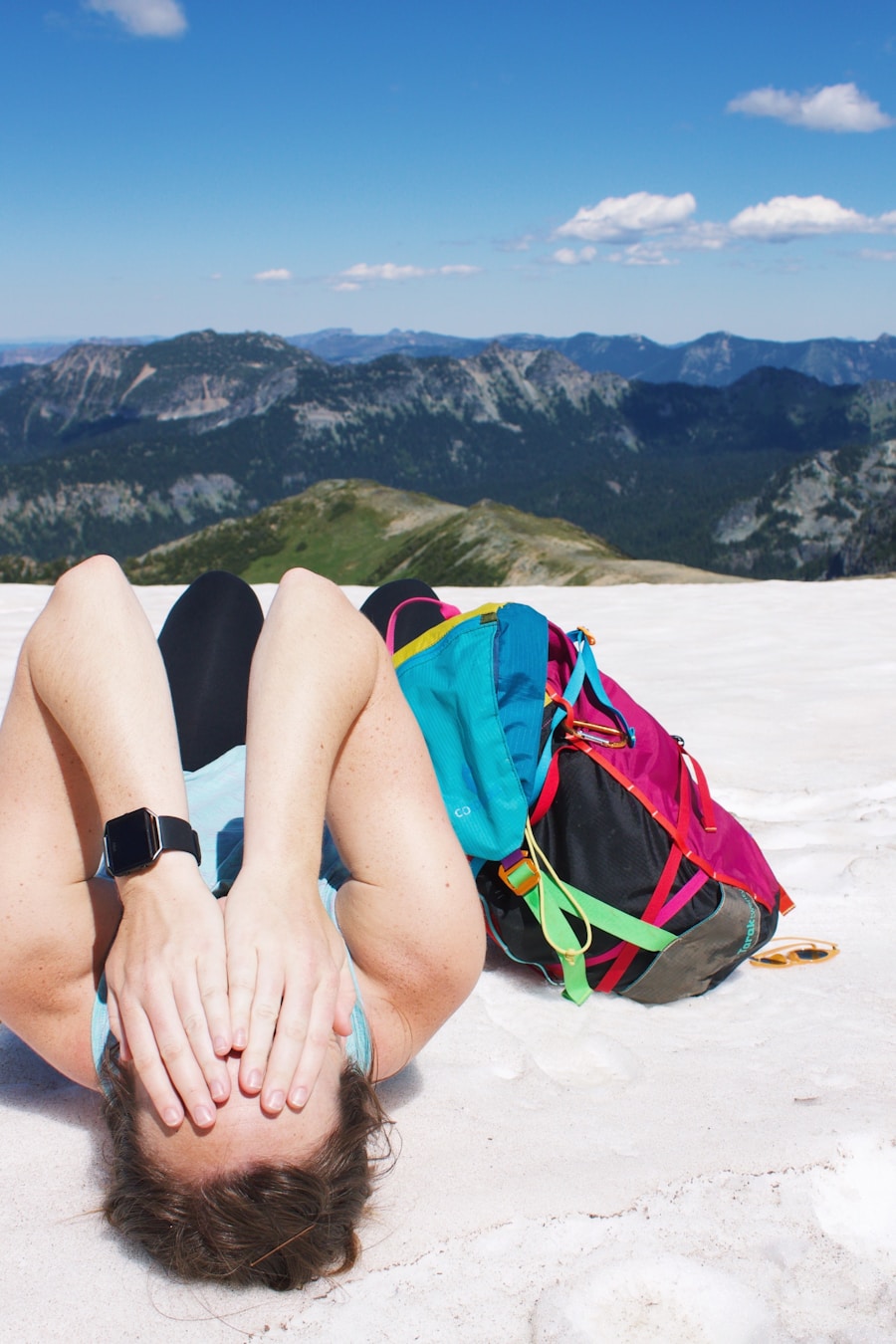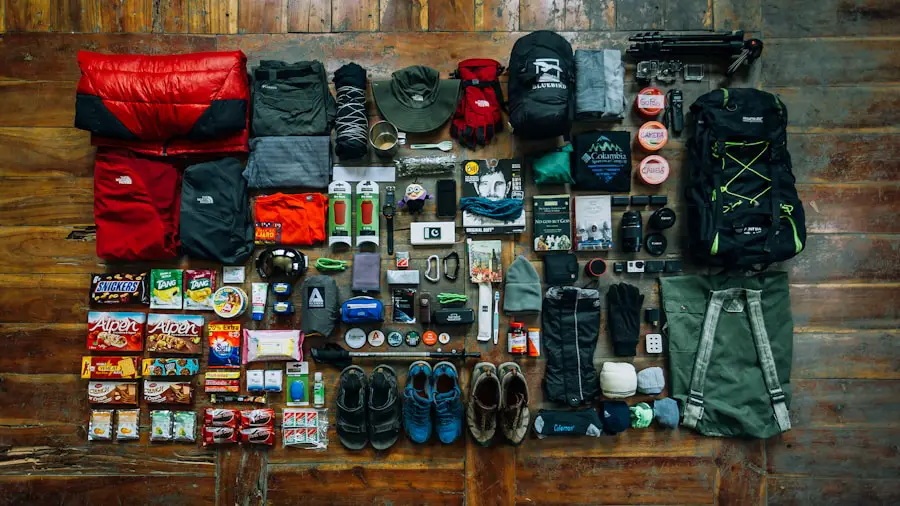When embarking on a hiking adventure, the significance of appropriate attire cannot be overstated. The right clothing not only enhances comfort but also plays a crucial role in ensuring safety and performance on the trail. Hiking often involves exposure to varying weather conditions, rugged terrains, and physical exertion, all of which can be mitigated by selecting the right gear.
Wearing suitable clothing can help regulate body temperature, wick away moisture, and protect against environmental elements such as wind, rain, and sun. Moreover, proper hiking attire can prevent injuries and discomfort. For instance, ill-fitting clothes can lead to chafing or restrict movement, while inappropriate footwear can result in blisters or sprains.
By investing time in choosing the right clothing, hikers can enhance their overall experience, allowing them to focus on the beauty of nature rather than the discomfort of their gear. This attention to detail not only contributes to a more enjoyable hike but also fosters a greater appreciation for the outdoors.
Key Takeaways
- Proper hiking attire is important for comfort, safety, and performance on the trail.
- Base layer clothing should be moisture-wicking and breathable to keep you dry and comfortable.
- Insulating layers should provide warmth and insulation without adding too much bulk.
- Outer shell clothing should be waterproof, windproof, and breathable to protect you from the elements.
- Footwear for hiking should be sturdy, supportive, and appropriate for the terrain you will be hiking on.
Base Layer Clothing for Hiking
The base layer is the foundation of any effective hiking outfit. Its primary function is to manage moisture by wicking sweat away from the skin, which is essential for maintaining comfort during physical activity. Materials such as merino wool, polyester, and nylon are popular choices for base layers due to their moisture-wicking properties and quick-drying capabilities.
Merino wool, in particular, is favored for its natural breathability and odor resistance, making it an excellent option for multi-day hikes where washing may not be feasible. In addition to moisture management, the base layer should provide a snug fit without being restrictive. This allows for freedom of movement while ensuring that the fabric stays close to the skin to effectively wick away sweat.
Long-sleeve shirts and leggings are common choices for cooler weather, while short-sleeve options may be more suitable for warmer conditions. Regardless of the specific choice, the base layer serves as a critical component in regulating body temperature and enhancing overall comfort on the trail.
Insulating Layers for Hiking

Once the base layer is established, the next step is to incorporate insulating layers that provide warmth without adding excessive bulk. Insulating layers are particularly important in cooler climates or during early morning and late evening hikes when temperatures can drop significantly. Fleece jackets, down vests, and synthetic insulated jackets are popular options that offer varying degrees of warmth and packability.
Fleece is a versatile material that provides excellent insulation while remaining lightweight and breathable. It retains warmth even when damp, making it a reliable choice for unpredictable weather conditions. On the other hand, down insulation is renowned for its superior warmth-to-weight ratio, making it ideal for colder environments.
However, it is essential to consider that down loses its insulating properties when wet; therefore, synthetic alternatives may be preferable in wetter climates as they maintain insulation even when exposed to moisture.
Outer Shell Clothing for Hiking
| Brand | Material | Waterproof Rating | Breathability Rating | Weight |
|---|---|---|---|---|
| Patagonia | GORE-TEX | 28,000mm | 15,000g | 12 oz |
| The North Face | HyVent | 20,000mm | 10,000g | 14 oz |
| Arc’teryx | GORE-TEX Pro | 30,000mm | 20,000g | 10 oz |
The outer shell serves as the first line of defense against external elements such as wind, rain, and snow. A high-quality outer shell is essential for protecting the insulating layers and base layer from moisture and harsh weather conditions. When selecting an outer shell, hikers should look for features such as waterproofing, breathability, and durability.
Materials like Gore-Tex or other waterproof-breathable fabrics are commonly used in high-performance jackets and pants. In addition to waterproofing, an effective outer shell should also offer ventilation options such as pit zips or mesh-lined pockets to allow excess heat to escape during strenuous activities. This balance between protection and breathability is crucial for maintaining comfort throughout the hike.
Furthermore, features like adjustable hoods, cuffs, and hems can enhance fit and prevent water from seeping in during inclement weather. Ultimately, a well-chosen outer shell can make a significant difference in a hiker’s ability to stay dry and comfortable on the trail.
Footwear for Hiking
Footwear is arguably one of the most critical components of hiking attire. The right shoes or boots can significantly impact stability, comfort, and overall performance on various terrains. When selecting hiking footwear, hikers must consider factors such as fit, support, traction, and waterproofing.
Hiking boots typically offer more ankle support than shoes, making them suitable for rugged trails or heavy loads. Trail runners have gained popularity among hikers seeking lightweight options that provide agility and speed on well-maintained paths. These shoes often feature breathable materials and aggressive tread patterns for enhanced grip.
However, they may lack the support needed for more challenging terrains. Conversely, traditional hiking boots are designed with stiffer soles and higher ankle coverage to provide stability on uneven ground but can be heavier and less breathable. Regardless of the type chosen, it is essential to ensure that footwear fits properly to avoid blisters and discomfort during long hikes.
Trying on shoes with the socks intended for hiking can help achieve a better fit. Additionally, breaking in new footwear before hitting the trails is crucial to prevent painful surprises during an adventure.
Accessories for Hiking

Accessories play a vital role in enhancing the overall hiking experience by providing additional comfort and protection. Essential accessories include hats, gloves, sunglasses, and gaiters. A wide-brimmed hat or a cap can shield the face from harmful UV rays while keeping sweat out of the eyes.
Sunglasses with UV protection are equally important for safeguarding the eyes from glare and sun exposure. Gloves are necessary for colder hikes or when navigating rocky terrains where hand protection is required. Lightweight gloves made from moisture-wicking materials can keep hands warm without sacrificing dexterity.
Gaiters are another useful accessory that protects the lower legs from mud, water, and debris while also preventing pebbles from entering boots. Additionally, a good-quality backpack is essential for carrying extra layers of clothing, food, water, and other necessities. A well-fitted backpack with adjustable straps can distribute weight evenly across the body, reducing strain on the back and shoulders during long hikes.
Considerations for Different Weather Conditions
Weather conditions can vary dramatically depending on location and time of year; therefore, hikers must adapt their attire accordingly. In hot weather, lightweight and breathable fabrics are essential to prevent overheating and excessive sweating. Moisture-wicking base layers combined with loose-fitting shorts or pants can help maintain comfort while allowing airflow.
Conversely, cold weather requires careful layering to trap heat effectively while allowing moisture to escape. Insulating layers made from fleece or down should be combined with a waterproof outer shell to protect against wind chill and precipitation. In snowy conditions, gaiters can provide additional protection against snow entering boots.
Rainy weather necessitates a reliable waterproof outer shell along with quick-drying base layers to ensure that hikers remain dry throughout their journey. It’s also wise to carry an extra set of clothing in case of unexpected downpours or wet conditions.
Tips for Choosing the Right Hiking Attire
Selecting appropriate hiking attire involves careful consideration of various factors including personal preferences, trail conditions, and duration of the hike. One key tip is to prioritize comfort over style; while looking good is nice, functionality should always come first in outdoor activities. Opting for clothing made from technical fabrics designed specifically for outdoor use will enhance performance significantly compared to regular cotton garments.
Another important aspect is layering; this approach allows hikers to adjust their clothing based on changing temperatures throughout the day. Starting with a moisture-wicking base layer followed by insulating layers and topped with an outer shell provides flexibility in managing body heat effectively. Finally, it’s crucial to test gear before heading out on longer hikes.
Trying out clothing combinations during shorter walks can help identify any potential issues such as chafing or restricted movement. By taking these considerations into account when choosing hiking attire, individuals can ensure a more enjoyable and successful outdoor experience.
If you’re planning a hiking trip, it’s important to consider what clothes to wear to ensure your comfort and safety on the trail. One helpful article to check out is this guide on the best carry-on suitcase with a USB charger. While this article may not directly address hiking attire, it can still provide valuable insights on travel gear that can enhance your overall hiking experience. Remember to choose clothing that is moisture-wicking, breathable, and suitable for the weather conditions you’ll be facing on your hike.
Love travel? Join Our Facebook Community
FAQs
What are the best clothes to wear for hiking?
The best clothes to wear for hiking are moisture-wicking and quick-drying materials such as synthetic fabrics or merino wool. These materials help to keep you dry and comfortable during your hike.
What should I wear as a base layer for hiking?
For a base layer when hiking, it is best to wear moisture-wicking and quick-drying materials such as synthetic fabrics or merino wool. These materials help to keep sweat away from your skin and keep you comfortable.
What type of shirt is best for hiking?
A moisture-wicking and quick-drying shirt made of synthetic fabric or merino wool is best for hiking. It should also provide sun protection and ventilation.
What type of pants are suitable for hiking?
For hiking, it is best to wear lightweight, quick-drying, and durable pants. Convertible pants that can be turned into shorts are also a popular choice for hiking.
What kind of socks should I wear for hiking?
It is best to wear moisture-wicking and quick-drying socks made of synthetic materials or merino wool. These materials help to prevent blisters and keep your feet dry and comfortable.
What type of jacket is recommended for hiking?
A lightweight, waterproof, and breathable jacket is recommended for hiking. It should also provide wind protection and be packable for easy storage.
What kind of footwear is best for hiking?
Sturdy and supportive hiking boots or shoes with good traction are best for hiking. They should be comfortable and provide ankle support for uneven terrain.
What accessories should I consider for hiking?
Accessories to consider for hiking include a sun hat, sunglasses, sunscreen, a backpack with hydration system, and trekking poles for added stability and support.
